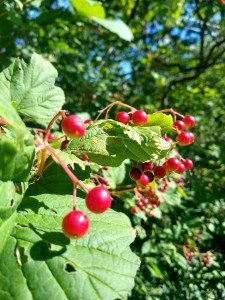 Last month at our summer cottage I went all Constance Spry, challenging myself to make a large indoor flower and foliage arrangement in the spirit of the great mid-twentieth century florist and lifestyle doyenne. Spry was noted for creating alluring set pieces that included wildflowers, tree and shrub branches, and various forms of roadsidia. This sounds terrible, but her results were innovative, dramatic and beautiful. The wealthy and celebrated flocked to Ms. Spry and she had many imitators.
Last month at our summer cottage I went all Constance Spry, challenging myself to make a large indoor flower and foliage arrangement in the spirit of the great mid-twentieth century florist and lifestyle doyenne. Spry was noted for creating alluring set pieces that included wildflowers, tree and shrub branches, and various forms of roadsidia. This sounds terrible, but her results were innovative, dramatic and beautiful. The wealthy and celebrated flocked to Ms. Spry and she had many imitators.
My own Spry-like efforts included lots of wildflowers like Queen Anne’s lace, purple field clover and mullein, plus a few coneflowers and phlox from the garden. I would have included some stems of wild chicory because I love the flowers’ sky blue color, but those glorious petals curl up the minute the stalks are clipped.
The scores of exuberant hostas that flourish on the shady side of the cottage provided plenty of big leaves. The same could not be said of flowering branches, which are key to the Constance Spry look. In high summer most flowering shrubs, wild and domestic, have long since lost their petals. Hydrangeas are one notable exception, but despite the fact that the property has been in the family since 1939, we have never managed to install a single one of them. I turned to the hedgerow surrounding a disused farm field and found what I needed–American cranberrybush viburnum, or Viburnum opulus var. americanum. The branches were lush and full, complete with lots of beautiful berries that were halfway through their summer journey from cream to vivid red. The maple-like leaves make good filler in arrangements. I clipped off a generous number of branches, being careful to leave plenty of berries for the birds. The viburnum completed the arrangement and gave me my Constance Spry moment.
My foraging efforts reminded me of the beauty and utility of the viburnum genus in general and the American cranberrybush in particular. There are scores of beautiful viburnums, making cranberrybush a distinguished performer in crowd of stellar plants. If you have some sunny or partly sunny space in your garden, it makes a great choice, providing three seasons of impressive interest.
At a time when invasive, non-native species, like tree of heaven, and its recent fellow traveler, the spotted lanternfly, are wreaking havoc with the North American environment, deciduous cranberrybush is a native, occurring in the wild from parts of Canada down through the northern half of the United States. The shrubs can grow eight to twelve feet tall and equally wide, but can be kept smaller with regular pruning. No one should be afraid of pruning a viburnum. If you do it after flowering, you will sacrifice some fruit, but the plant will thank you with a burst of new growth.
American cranberrybush is not related to the true cranberry, celebrated everywhere at Thanksgiving. True cranberries are part of the Ericaceae or heather family, along with their relatives, blueberries. Cranberrybush is part of the Adoxaceae plant family, which also includes elderberries. Family ties notwithstanding, cranberrybush fruit is edible and can be made into sauces and jellies, just like a true cranberry.
Of course, you have to harvest the fruit before the birds get to it, which may take some ingenuity. When I selected branches for my arrangement, I was very conscious of a couple of disapproving cardinals parked in a nearby tree.
Cranberrybush’s spring show starts with white, slightly domed flowers that resemble lacecap hydrangeas. These are beautiful in and of themselves, but they give way to clusters of berry-like fruits that turn from cream to red over the course of weeks in mid-summer. The ‘cranberries” stand out nicely from the dark green, lobed leaves.
In the fall, those leaves put on their own dramatic performance, turning shades of red, yellow and purple as the season advances. If I were creating a Constance Spry masterpiece in September, I would certainly include them.
The cranberrybushes on our summer property, which were probably “planted” by passing birds, were growing in a hedgerow adjacent to a drainage ditch, so they were perfectly positioned to soak up the available water. If you are growing one in a domestic situation, give the young shrub lots of organic material when you plant it, mulch well around the base in doughnut fashion, and provide consistent moisture. The rewards in spring, summer and fall will justify the exertion.
Several times each summer, when I mow the lawn on hot, sticky days, I consider eliminating grass completely in favor of a larger garden. When and if that happens, an American cranberry bush will have pride of place in the revamped landscape.
